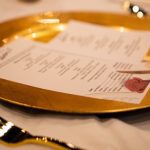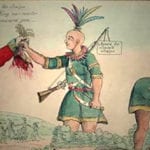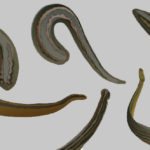 History
History  History
History  Animals
Animals Ten Times It Rained Animals (Yes, Animals)
 Mysteries
Mysteries 10 Devastating Missing Child Cases That Remain Unsolved
 Creepy
Creepy 10 Scary Tales from the Middle Ages That’ll Keep You up at Night
 Humans
Humans 10 One-of-a-kind People the World Said Goodbye to in July 2024
 Movies and TV
Movies and TV 10 Holiday Movies Released at Odd Times of the Year
 Politics
Politics 10 Countries Where Religion and Politics Are Inseparable
 Weird Stuff
Weird Stuff 10 Freaky Times When Famous Body Parts Were Stolen
 Miscellaneous
Miscellaneous 10 Interesting Things Manufacturers Stopped Making and Why
 Gaming
Gaming 10 Funny Tutorials in Games
 History
History 10 Desperate Last Stands That Ended in Victory
 Animals
Animals Ten Times It Rained Animals (Yes, Animals)
 Mysteries
Mysteries 10 Devastating Missing Child Cases That Remain Unsolved
Who's Behind Listverse?

Jamie Frater
Head Editor
Jamie founded Listverse due to an insatiable desire to share fascinating, obscure, and bizarre facts. He has been a guest speaker on numerous national radio and television stations and is a five time published author.
More About Us Creepy
Creepy 10 Scary Tales from the Middle Ages That’ll Keep You up at Night
 Humans
Humans 10 One-of-a-kind People the World Said Goodbye to in July 2024
 Movies and TV
Movies and TV 10 Holiday Movies Released at Odd Times of the Year
 Politics
Politics 10 Countries Where Religion and Politics Are Inseparable
 Weird Stuff
Weird Stuff 10 Freaky Times When Famous Body Parts Were Stolen
 Miscellaneous
Miscellaneous 10 Interesting Things Manufacturers Stopped Making and Why
 Gaming
Gaming 10 Funny Tutorials in Games
10 Weirdest Medical Hoaxes in History
For centuries, bizarre physical conditions, strange health-based occurrences, and questionable treatments have gained widespread attention, only to be exposed as frauds. Often the people behind these medical hoaxes are ordinary individuals who manage to fool physicians or scientists. Sometimes, a medical practitioner is in on the scam. From a woman birthing rabbits to eyewear that can curb your appetite, here are 10 of history’s weirdest medical hoaxes.
Related: 10 Interesting Pseudosciences And Hoaxes
10 Human-Dog
While modern science has done a lot to dispel myths and superstitions associated with trans-species breeding, major developments in reproduction, such as the ability to clone mammals, have given way to a whole new crop of lab-based breeding hoaxes.
One recent example of this is the story of a human-dog hybrid that was widely circulated across the internet. The article explained that Israeli scientists were studying a cross between a human and a Labrador retriever. Acknowledging that a trans-species like this was thought to be impossible, it went on to report that humane workers had discovered the remains of another trans-species that was believed to be this animal’s parent, buried in a shallow grave. The human parent seemed to be the son of a high-profile political family.
The story was accompanied by a photo of what appeared to be a “strange half-woman, half-dog (or pig) hybrid mother nursing its young.”
It turns out that there was no human-dog hybrid. Apparently, the image in the photo, which has been forwarded to so many inboxes all over the world, is not even a living creature, just a sculpture by Patricia Piccinini from a 2003 exhibit titled “We Are Family.”[1]
9 Mass Fainting on Daytime TV
The Phil Donahue Show, which aired on TV in syndication from 1970 to 1996, was a pioneering daytime talk show for its emphasis on socially relevant topics. But along with the lofty subject matter, there was also a fair amount of sensationalistic episodes, including one show that was shocking in a completely unexpected way. During the live taping of an episode about gay senior citizens on January 21, 1985, people in the audience started fainting.
Beginning with an audience member who passed out while she was speaking into a microphone, seven people fainted in the course of taping that one show. There was speculation that the heat in the studio, which contrasted with the very cold temperature outside, might be the explanation for this strange occurrence. It turned out that the mass fainting was just a stunt organized by the group Fight Against Idiotic Neurotic Television (FAINT), led by media hoaxer Alan Abel, to protest what Abel thought was the poor quality of TV at the time. Wouldn’t he love what’s on TV today![2]
8 Cello Scrotum
The term cello scrotum sounds like a joke, which is exactly what it turned out to be. However, 35 years went by before the two people who mischievously coined the phrase admitted they were only kidding. The prank was in response to a letter from Dr. P. Curtis that appeared in the British Medical Journal, reporting three cases of a malady the doctor described as “guitar nipple.” Assuming this letter was a hoax, married couple John Murphy and Dr. Elaine Murphy were inspired to write a reply. The letter, published in a 1974 issue of the journal, was signed by John but written by Elaine. It said in part: “Though I have not come across ‘guitar nipple’ as reported by Dr. P. Curtis… I did once come across a case of ‘cello scrotum’ caused by irritation from the body of the cello.”
When the Murphys finally announced that cello scrotum was just a spoof, they argued that it would be obvious to anyone who had watched the cello being played that such a condition was impossible.[3]
7 The Child Who Grew a Golden Tooth
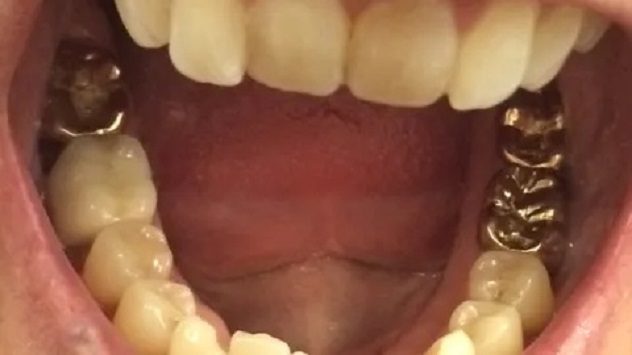
In medieval times, astrology was often used to guide medical practitioners and researchers. In the late 16th century, a medical professor at Julius University in Helmstedt named Jakob Horst decided to investigate reports of Christoph Müller, a young boy in Silesia, said to have grown a golden tooth. When tests confirmed that Müller had a real gold tooth, Horst wrote a treatise in which he laid out a theory based on astrology. He speculated that the bone in Müller’s jaw had turned to gold because he was born when the planets were in an unusual alignment, which Horst believed had caused heat from the sun’s rays to intensify.
When the impact of chewing food and multiple tests caused deterioration of what turned out to just be a thin layer of gold fitted on the outside of the tooth, Müller refused to let it be examined anymore. One curious, drunken nobleman who wouldn’t take no for an answer stabbed the boy’s cheek. After a physician treating the wound discovered the truth about the tooth, the person responsible for the gold veneer seems to have escaped punishment either by running away or remaining anonymous, but Müller was hauled off to prison. However, something positive did come out of the hoax: this was the first documented creation of a molded gold crown in the history of dentistry.[4]
6 Vilcabamba
There have been a lot of hoaxes that have centered on the possibility of extending the human lifespan. One of these was a widespread story in the 1970s involving the Ecuadorian village of Vilcabamba, where it was said to be common for residents to live past 100 years old, with at least one person reaching 134. American journalists took the story seriously, and an article in National Geographic drew a large number of tourists to Vilcabamba. But the reason behind the longevity was unclear.
In 1978, Richard Mazess of the University of Wisconsin and Sylvia Forman of U.C. Berkeley released the findings of research they had conducted, which revealed this fountain of youth to be a myth. Investigation showed that no one in the village was over 100 years old. The average age of those who were believed to be centenarians was just 86 years old. One man claiming to be 127 was actually 91.[5]
5 Longevity in Bottled Breath
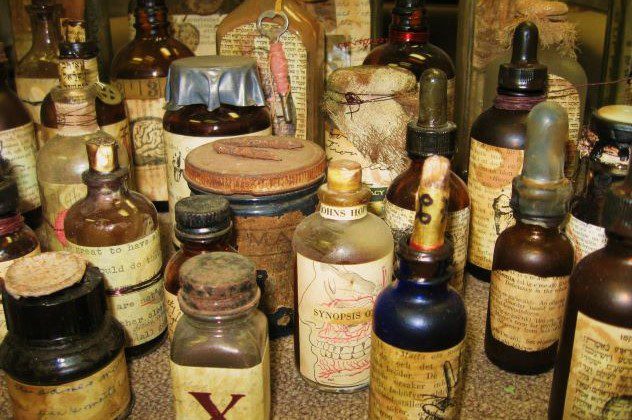
As a playful hoax, 18th-century physician Johann Heinrich Cohausen included a description of a very strange formula in Hermippus redivivus, an expositional work he authored on longevity. He wrote about an elixir that bottled the breath of young women, saying the consumption of the product could lengthen a person’s life span. However, Cohausen reveals in the last few pages of the treatise that it is really a satire. So, instead of fraud, it’s more of a scholarly practical joke.[6]
4 Vision-Dieter glasses

There have been countless weight loss hoaxes over the years, from pills and elixirs to topical treatments, fad diets, and more. One product sold in the 1970s with glaringly false claims was Vision-Dieter glasses, which were said to decrease cravings and hunger by using “secret European color technology.”
The initial objective of the creator was to manufacture glasses that would distort the color of food packaging in hopes of making shoppers less likely to purchase products just because they were in colorful containers. But realizing how much money could be made in the dieting field, he decided to market the glasses as a tool for consumers who were trying to lose weight.
It should come as no surprise that the Food and Drug Administration took action. These color-tinted weight reduction glasses were seized due to misbranding. Most pairs were eventually destroyed by the FDA when the claimant refused to come forward.[7]
3 Metal Rod Pain Reliever: The “Metallic Tractors”
The 18th century was filled with all sorts of preposterous medical hoaxes, especially far-fetched devices and treatments. One of the strangest products marketed for pain relief was a set of two small pointed metal rods flat on one side and rounded on the other, called “metallic tractors.” They were invented by Connecticut physician Elisha Perkins. These implements could, according to Perkins, ease discomfort from gout, rheumatism, and other conditions by draining the “noxious electrical fluids,” which he thought were to blame for these conditions. The sufferer was instructed to gently rub the affected area with these rods.
It wasn’t just ignorant people who fell for this scam. Among those who ordered a set was George Washington. A series of clinical trials from 1799 to 1801 demonstrated that any pain relief was just a placebo effect.[8]
2 Celestial Bed
The legendary 18th-century British quack James Graham had a whole temple full of hoaxes. Graham, who had passed himself off as a physician, even though he never completed his medical schooling, was best known for what he called electrical medicine. The harnessing of electricity was still a new science during this time, and Graham was inspired by the experiments of Benjamin Franklin, who he actually met while in America.
Graham’s Temple of Health was frequented by aristocrats and other celebrities. One of his most interesting devices was a fertility contraption called a Celestial Bed, which he claimed could cure sterility and impotence. This love nest was available for couples to rent per night. It could be tilted to different angles and contained a mattress full of sweet new wheat or oat straw, lavender flowers, rose leaves, balm, and horse tail hairs. There were also costly perfumes and oils underneath the bed.
According to the self-styled doctor, static electricity that moved through copper coils around the bed produced a magnetic fluid surrounding the lovers, which “helped boost their strength and increase the women’s fertility.” The couple was treated to gentle music, and above the bed, there was a mirror decorated with lush flowers and erotic illustrations. Graham asserted that anyone who spent an evening there would conceive a child.[9]
1 Mary Toft and Her Litters of Rabbits
People have often been fascinated by the idea of crossbreeding between different species, especially the possibility of humans breeding with other types of animals. There have been a number of women over the centuries who claimed to have given birth to creatures belonging to a different species. However, the most famous such story is that of an 18th-century English servant woman, Mary Toft, who managed to convince physicians and others that she had given birth to rabbits. There were thought to be multiple litters totaling 15 bunnies, all dead at birth. To answer an obvious question, “how were the rabbits conceived,” Toft said she had been startled by a rabbit in a field, an explanation which fit in with the old myth of maternal impression. Following the incident, Toft supposedly dreamt about rabbits and experienced an intense appetite for rabbits—as food.
Obstetrician John Howard was sure enough that Toft really had birthed rabbits. He spread the word to prominent British doctors, as well as King George I, who had his doctor look into the matter. Although this physician was fooled as well, an investigation by a surgeon dispatched from the royal household found evidence of a hoax. While examining some of the rabbits, he discovered “that dung inside one of them contained corn—proving it could not have developed inside Mrs. Toft’s womb.”
Toft kept up the ruse, producing various animal parts like a hog’s bladder and a kitten’s legs. So when a man was caught sneaking a rabbit into her room, she finally confessed to placing the rabbits in her vagina, allowing them to be delivered, hoping the stunt would result in a pension from the crown. But instead she got a few months in prison. [10]

